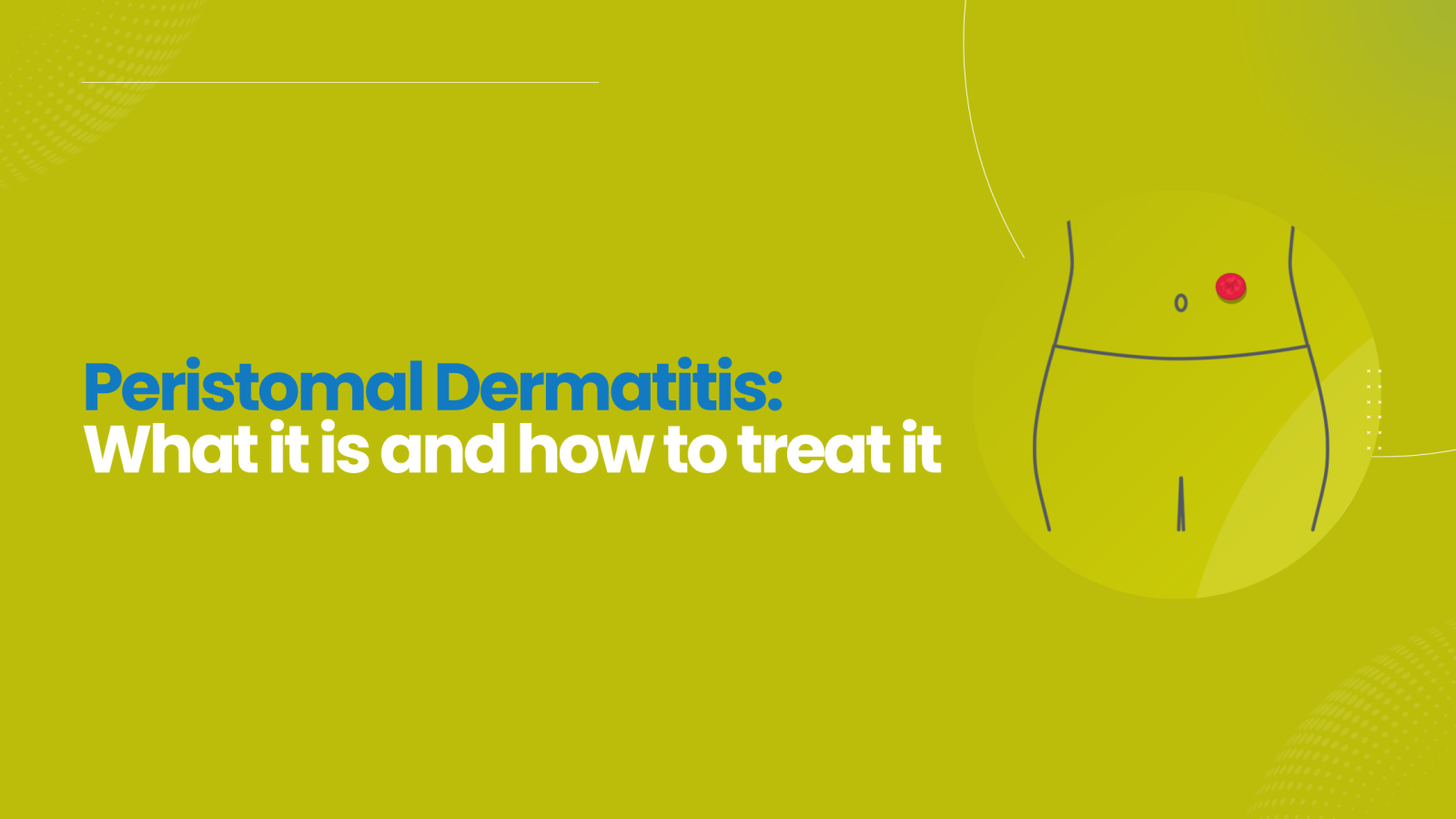Strategies for effective peristomal dermatitis management and treatment
In the first few days and weeks after a new ostomy formation, prevention of peristomal dermatitis has to be a top priority for the healthcare professionals involved in a patient’s care.
That’s because dermatitis prevents the stoma pouch from adhering properly. This can cause further problems down the line as the stoma is then more prone to leakage, producing more skin inflammation and damage.
Preventing peristomal dermatitis also supports patient well-being. As well as causing discomfort and pain, peristomal dermatitis often causes extra stress and embarrassment at a time when patients are already struggling to transition into their new life as an ostomate.
However, it’s worth remembering that looking out for signs of dermatitis is important at any point in a patient’s stoma journey, not just those early, post-surgery days. Caught early, it’s easier to prevent dermatitis from developing into a chronic, hard-to-treat issue.
So how do you prevent — and provide rapid treatment — for peristomal dermatitis in your patients?
Keep the area clean
The skin around a stoma should always be clean and dry.
Ensure that the area is regularly cleaned with the right products. These should be both un-fragranced and moisturising. They should also be suitable for sensitive skin. Regular cleaning ensures that, if there is any stoma leakage, it doesn’t sit on the skin for long.
Use a barrier cream and barrier film
Creating a barrier between the skin and any irritants will help to prevent peristomal dermatitis from occurring. It also protects inflamed or irritated skin from any further damage as it heals.
There are a number of barrier products available that have been designed especially with the needs of ostomates in mind.
For treatment and management of peristomal dermatitis, barrier film is often the first port of call. Barrier film is applied as a liquid, which then forms a thin, translucent, waterproof barrier between the skin and any irritants. The film lasts from 24 hours up to 72 hours and depending on the peristomal skin damage, may require to be managed in conjunction with bandages or dressings.
Barrier cream is also used in mild cases of peristomal dermatitis. Simply apply the cream to the affected area and cover with a bandage or dressing. The cream creates a waterproof layer, protecting the skin from further stoma leakage.
Another common issue encountered with stoma patients is peristomal medical adhesive-related skin injury (PMARSI). This is irritation and damage to the stoma site that can occur when a pouch is removed too frequently or too roughly. It is important then, to ensure that when removing stoma bags, proper care is taken to not damage the skin.
Use of a product such as Lifteez Medical Adhesive Remover is strongly encouraged. Coming as both an aerosol and wipes, Lifteez is an alcohol-free solution that quickly and efficiently breaks down adhesive bonds. This makes removing pouches much easier and keeps skin protected and healthy.
When approaching stoma care, a two-pronged approach of Prevent and Protect is what healthcare professionals should strive for. With proper use of the right products, you can ensure that you are not only protecting the skin from injury but preventing damage before it even has the chance to occur.
Want to know more about protecting peristomal skin? Take a look at our Stoma Mini Guide, designed to support healthcare professionals in ostomy care.
Keep an eye out for infection
Proper treatment and cleaning of the skin affected by peristomal dermatitis is incredibly important. That’s because it lowers the chance of a patient developing an infection.
However, it’s worth remembering that proper care doesn’t eliminate this risk entirely. So you should always be vigilant for signs of infection. This infection could be bacterial or fungal, so it’s important to familiarise yourself with the signs and symptoms of both.
Healthcare professionals should monitor skin changes closely and treat infection as soon as they spot it. This will help prevent the worsening of any infection, thereby avoiding further complications for the patient.
Teach patients how to care for their stoma on their own
Of course, healthcare professionals can’t be with patients 24/7. So patients have to understand how to clean and manage their stoma themselves.
This is ultimately good for patient well-being, as it supports ostomates to be self-sufficient and have the flexibility and choice to live life on their own terms. It also reduces the chance that peristomal dermatitis goes unnoticed by a patient and becomes a serious medical problem.
So teach patients:
- How to clean their stoma
- How to apply barrier films and creams
- What peristomal dermatitis symptoms look like
- When to seek medical help
In doing so, you give them all of the information and the skills they need to contribute to and support their own care.
Offer patients emotional support
All of the ideas on this so far have dealt with the practicalities of peristomal dermatitis prevention and care. But providing patients with emotional support is an important piece of the treatment puzzle.
Having a stoma can be uncomfortable, stressful and embarrassing — particularly for recent ostomates who are still getting used to managing their stoma.
Healthcare professionals should try to support patients as they transition into this new way of life by:
- Taking the time to listen to their concerns and frustrations
- Giving choice wherever possible to help them feel more in control of their situation
- Encouraging them to talk with friends, family or stoma support groups
